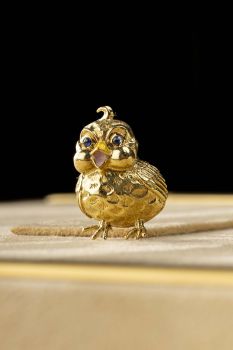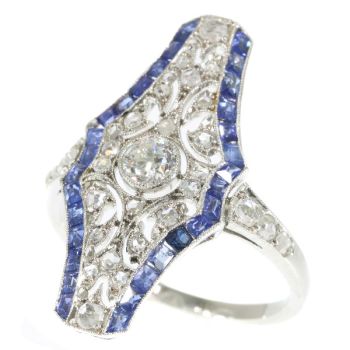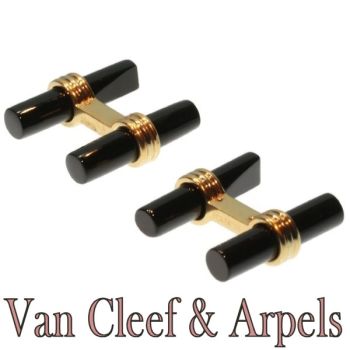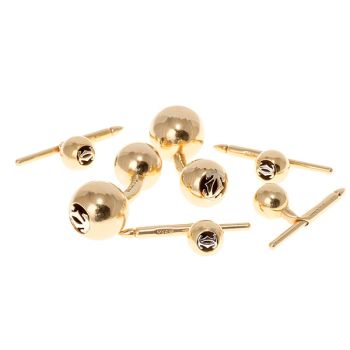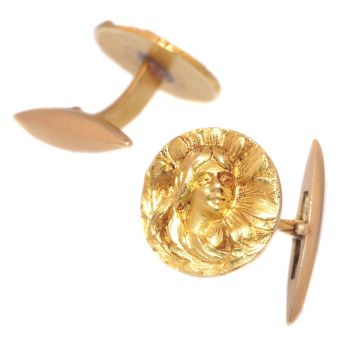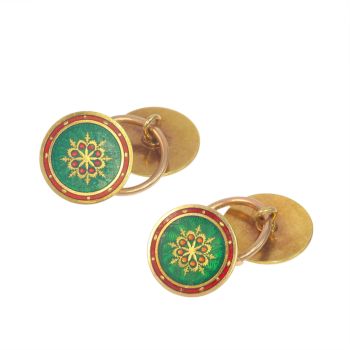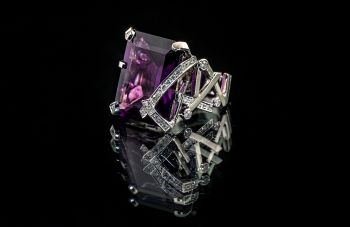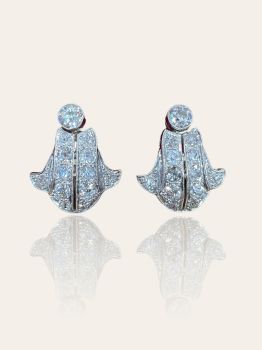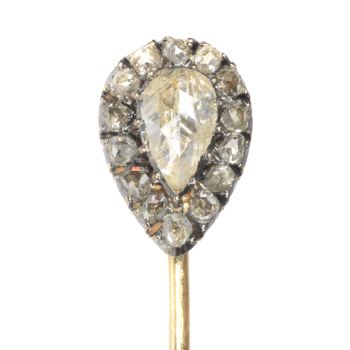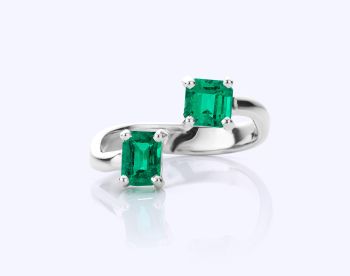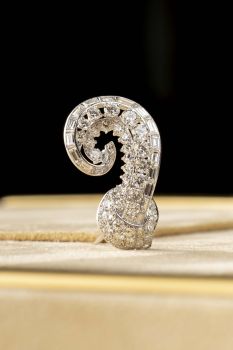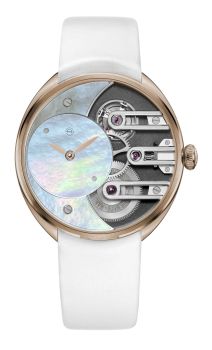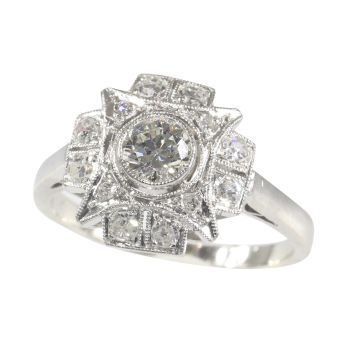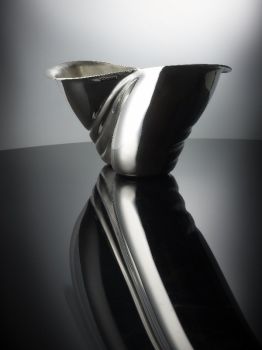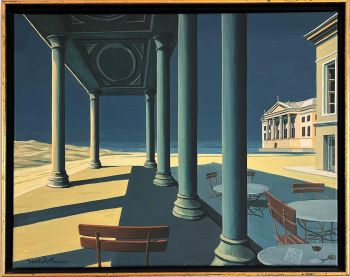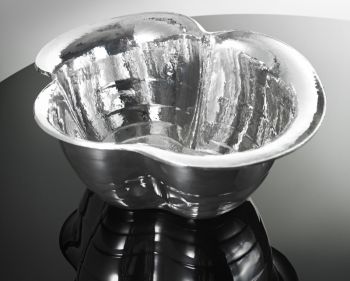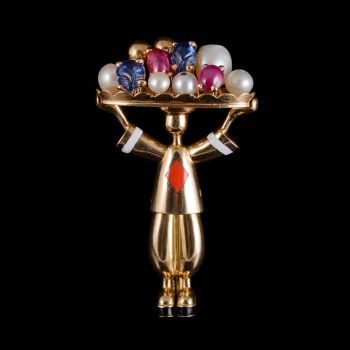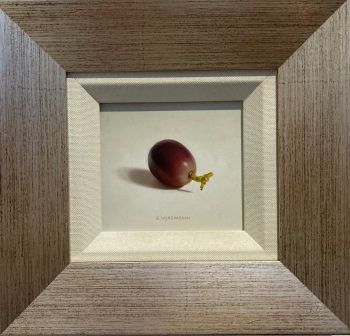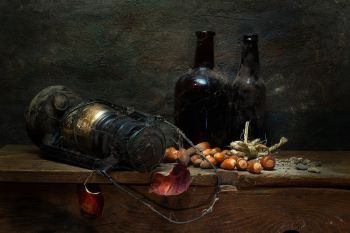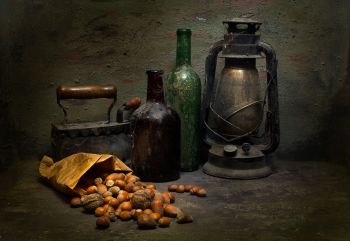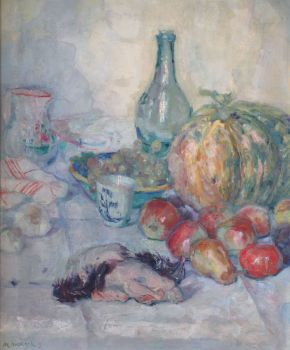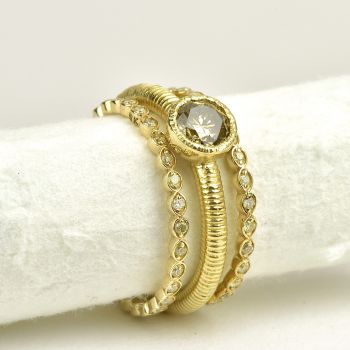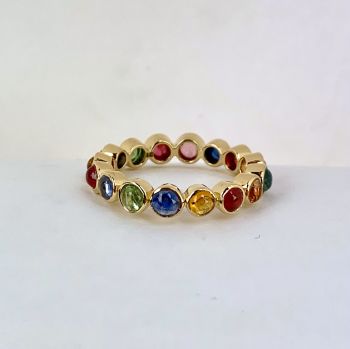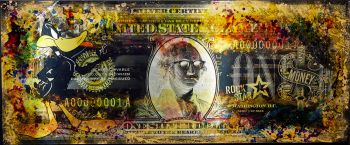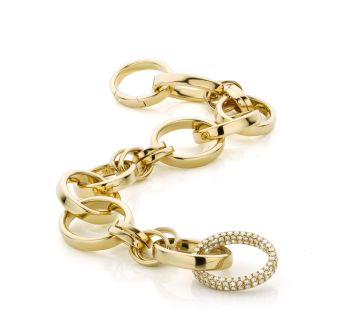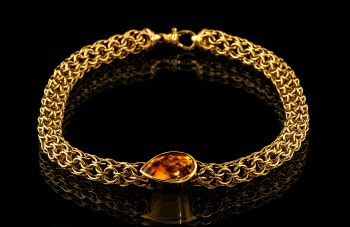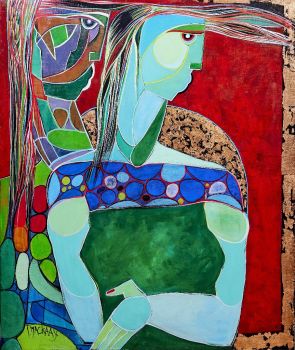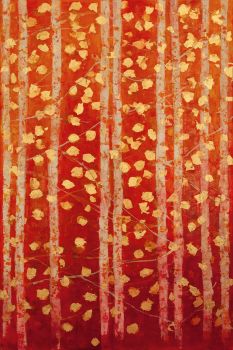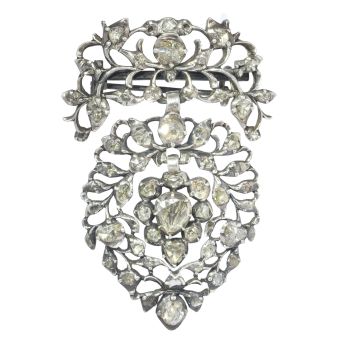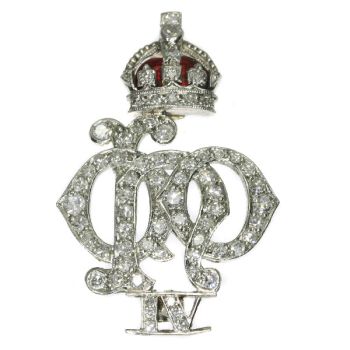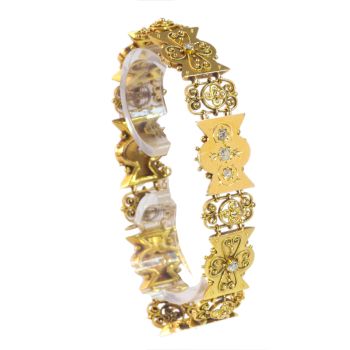Gemelli antichi maschera francese in oro giallo 18K 1880
Artista Sconosciuto
Oro
€ 5.650
Adin Fine Antique Jewellery
- A proposito di opere d'arte
These unique 18K yellow gold French Victorian cufflinks from 1890 depict four grinning portraits resembling characters from Ancient Greek comedy and tragedy theatre. Through a cable chain, one cufflink connects assumingly a Satyr with horns and pointyears to a devilish persona with pointed ears as well and fangs. As for the other cufflink, the portrait of a foolish old man with a moustache, a goatee and horns fit to impersonate Dionysos, the Greek god of wine, is hanging besides a feminine face withpointed ears resembling Medusa or a female worshipper of Dionysos.
With even every backside individually modelled and with the finest hinges on the back, these masculine jewels are a sample of pure French sophistication, which will assist you in any performance in this play without rehearsal that we call life.Antique jewelry object group: cufflinks
Condition: excellent condition
- (more info on our condition scale)
Country of origin: France
Style: Late-Victorian - Victorian decorative arts refers to the style of decorative arts during the Victorian era. The Victorian era is known for its eclectic revival and interpretation of historic styles and the introduction of cross-cultural influences from the middle east and Asia in furniture, fittings, and Interior decoration.
Victorian design is widely viewed as having indulged in a regrettable excess of ornament. The Arts and Crafts movement, the aesthetic movement, Anglo-Japanese style, and Art Nouveau style have their beginnings in the late Victorian era.
- See also: late-Victorianor more info on styles
Style specifics: Late Victorian / early Art Nouveau - The subject of this piece, although typical 19th Century, announces the coming of the Art Nouveau style.
Extra information: These cufflinks are a strong representation of the craftsmanship of the medallists of the Late Victorian era in France. Designers continued to use this technique of engraving medals extensively during the Art Nouveau period. The manufacturing of thistype of jewellery became so widely known and appreciated, that the makers deserved their own style division, called "the medallists".
Period: ca. 1880
- (events & facts of this era, poetry of this era, fashion of this era)
Source of inspiration: Mythology
Theme: Four comedy and tragedy masks (?)
Material: 18K yellow gold
- (more info on precious metals)
Hallmarks: The French control mark for 18K gold representing an eagle's head that was in use in France from about 1838.
- (more info on hallmarks)
Dimensions: each head approximately 1,77 cm (0,70 inch) x 1,17 cm (0,46 inch)
Weight: 11,40 gram (7,33 dwt)
Reference Nº: 16061-0012
Copyright photography: Adin, fine antique jewelry
- A proposito di opere artista
Può succedere che un artista o un creatore sia sconosciuto.
Alcune opere non sono determinate da chi sono state realizzate o sono state realizzate da (un gruppo di) artigiani. Esempi sono statue dell'antichità, mobili, specchi o firme non chiare o leggibili ma anche alcune opere non sono affatto firmate.
Inoltre puoi trovare la seguente descrizione:
•"Attribuito a …." A loro avviso probabilmente opera dell'artista, almeno in parte
•“Studio di ….” o “Officina di” A loro avviso un'opera eseguita nello studio o nella bottega dell'artista, eventualmente sotto la sua supervisione
•“Cerchio di…” A loro avviso un'opera del periodo dell'artista che mostra la sua influenza, strettamente legata all'artista ma non necessariamente al suo allievo
•"Stile di..." o "Seguace di..." A loro avviso un'opera eseguita nello stile dell'artista ma non necessariamente da un allievo; può essere contemporaneo o quasi contemporaneo
•“Modalità di…” A loro avviso un'opera nello stile dell'artista ma di epoca successiva
•"Dopo …." A loro avviso una copia (di qualsiasi data) di un'opera dell'artista
•“Firmato…”, “Datato…” o “Iscritto” A loro avviso l'opera è stata firmata/datata/inscritta dall'artista. L'aggiunta di un punto interrogativo indica un elemento di dubbio
•"Con firma....", "Con data...", "Con iscrizione..." o “Riporta firma/data/iscrizione” a loro avviso la firma/data/iscrizione è stata aggiunta da qualcuno diverso dall'artista
Sei interessato ad acquistare questa opera d'arte?
Artwork details
Related artworks
- 1 - 4 / 12
- 1 - 4 / 24
Armin Strom
Armin Strom "Lady Beat Rosé Gold Mother of Pearl"2022 - 2023
Prezzo su richiestaHa-Juweliers
1 - 4 / 24Marie-Jeanne van Hövell tot Westerflier
Contemplation 012006 - 2017
Prezzo su richiestaKoster Fine Art Gallery
1 - 4 / 24Vincent Cober
Geelgouden armband waarvan 1 schakel bezet met 200 diamanten2022
Prezzo su richiestaVincent Cober
1 - 4 / 24- 1 - 4 / 12












